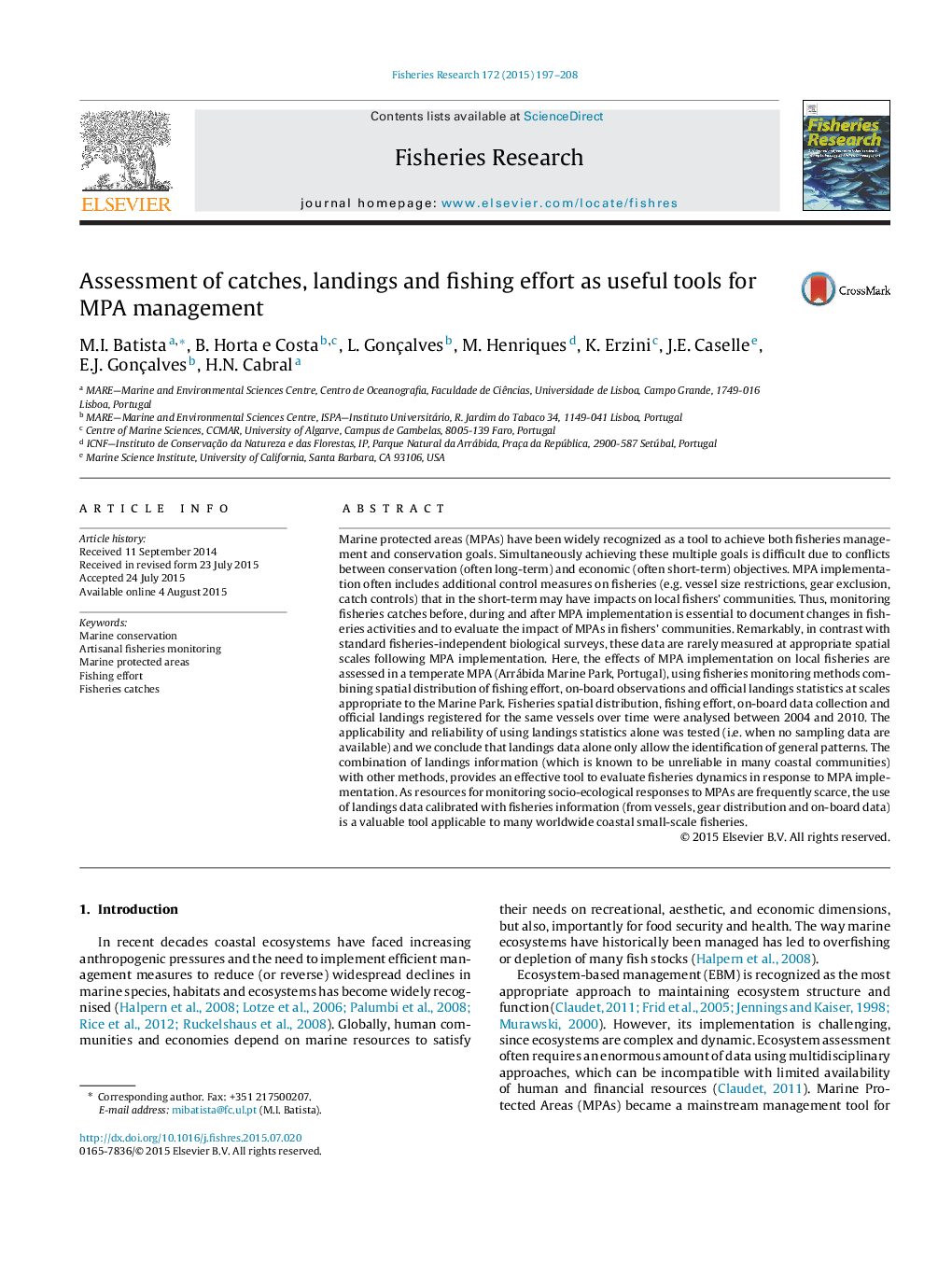| Article ID | Journal | Published Year | Pages | File Type |
|---|---|---|---|---|
| 6385435 | Fisheries Research | 2015 | 12 Pages |
Abstract
Marine protected areas (MPAs) have been widely recognized as a tool to achieve both fisheries management and conservation goals. Simultaneously achieving these multiple goals is difficult due to conflicts between conservation (often long-term) and economic (often short-term) objectives. MPA implementation often includes additional control measures on fisheries (e.g. vessel size restrictions, gear exclusion, catch controls) that in the short-term may have impacts on local fishers' communities. Thus, monitoring fisheries catches before, during and after MPA implementation is essential to document changes in fisheries activities and to evaluate the impact of MPAs in fishers' communities. Remarkably, in contrast with standard fisheries-independent biological surveys, these data are rarely measured at appropriate spatial scales following MPA implementation. Here, the effects of MPA implementation on local fisheries are assessed in a temperate MPA (Arrábida Marine Park, Portugal), using fisheries monitoring methods combining spatial distribution of fishing effort, on-board observations and official landings statistics at scales appropriate to the Marine Park. Fisheries spatial distribution, fishing effort, on-board data collection and official landings registered for the same vessels over time were analysed between 2004 and 2010. The applicability and reliability of using landings statistics alone was tested (i.e. when no sampling data are available) and we conclude that landings data alone only allow the identification of general patterns. The combination of landings information (which is known to be unreliable in many coastal communities) with other methods, provides an effective tool to evaluate fisheries dynamics in response to MPA implementation. As resources for monitoring socio-ecological responses to MPAs are frequently scarce, the use of landings data calibrated with fisheries information (from vessels, gear distribution and on-board data) is a valuable tool applicable to many worldwide coastal small-scale fisheries.
Related Topics
Life Sciences
Agricultural and Biological Sciences
Aquatic Science
Authors
M.I. Batista, B. Horta e Costa, L. Gonçalves, M. Henriques, K. Erzini, J.E. Caselle, E.J. Gonçalves, H.N. Cabral,
